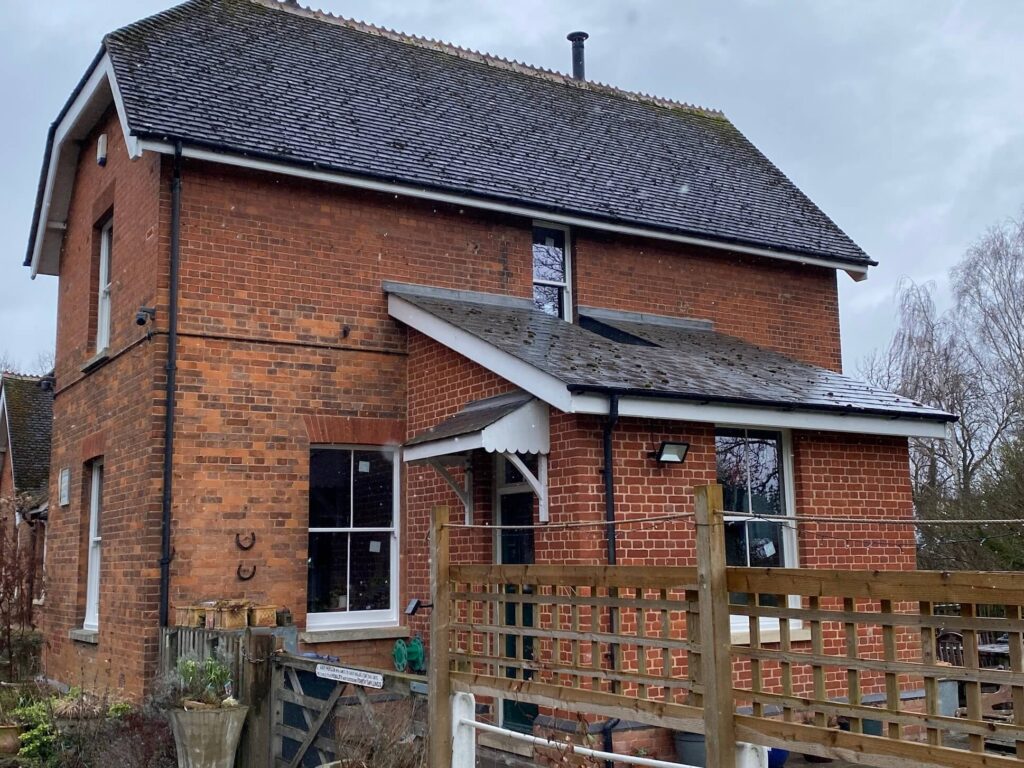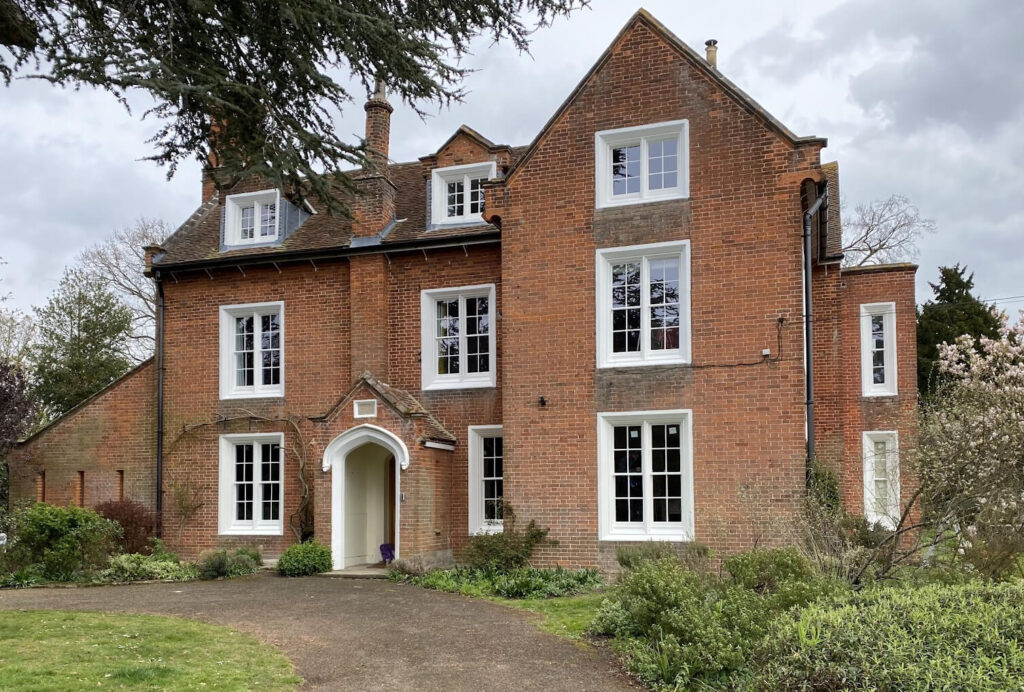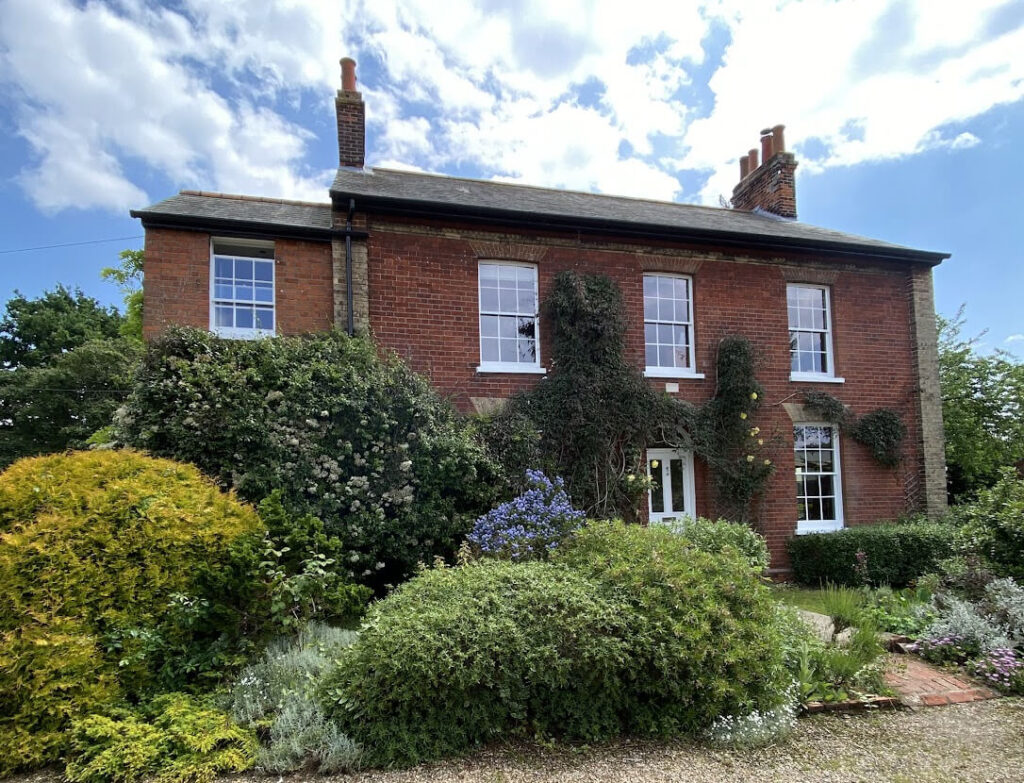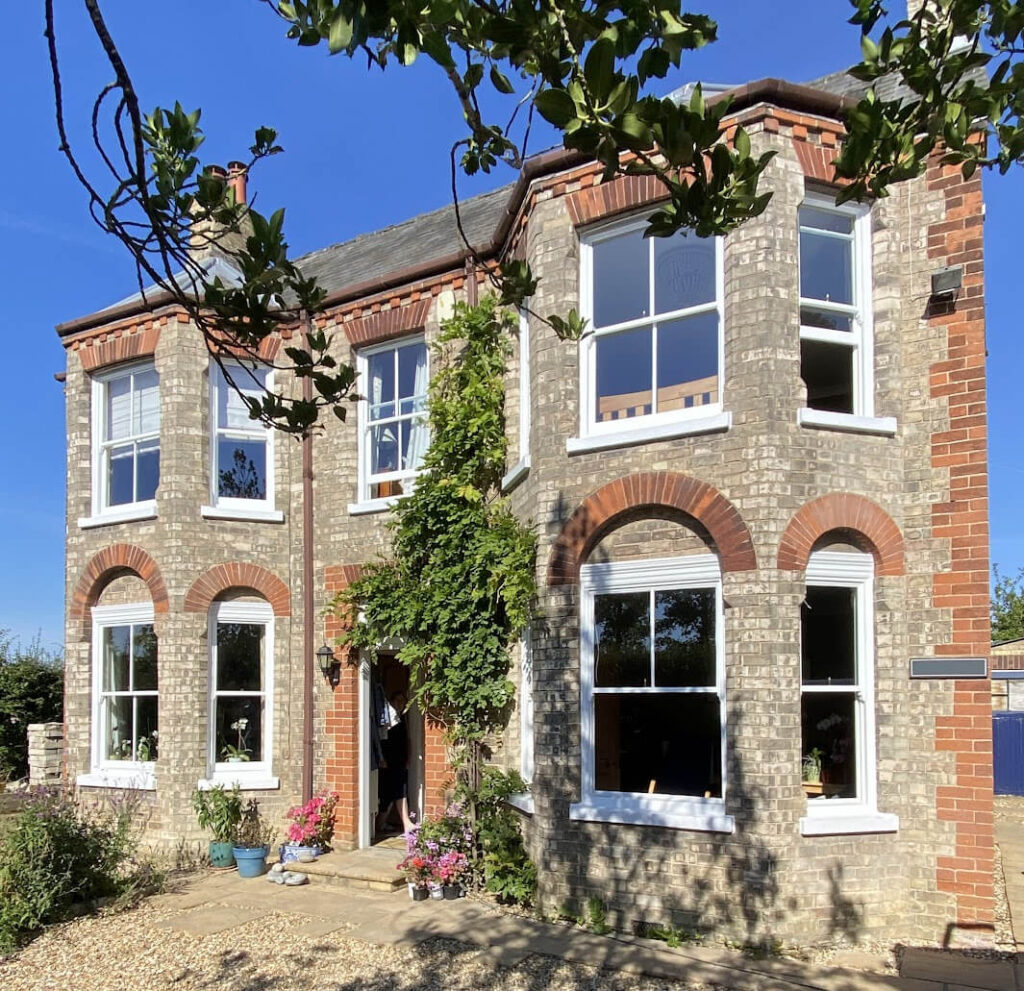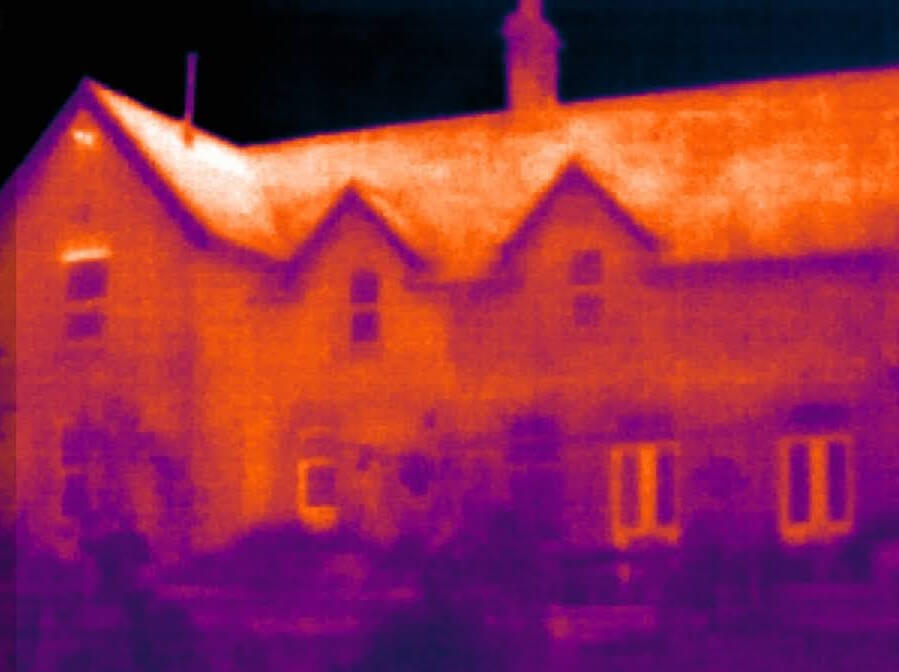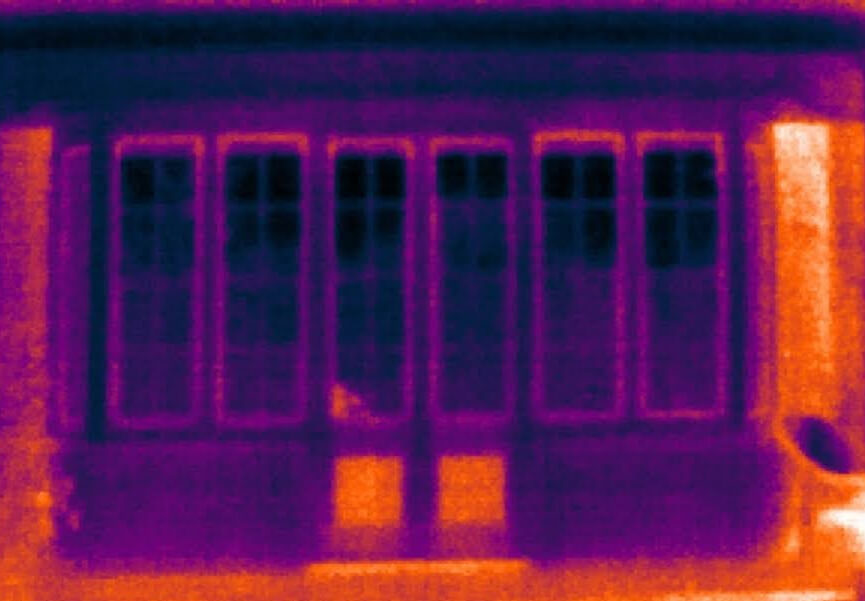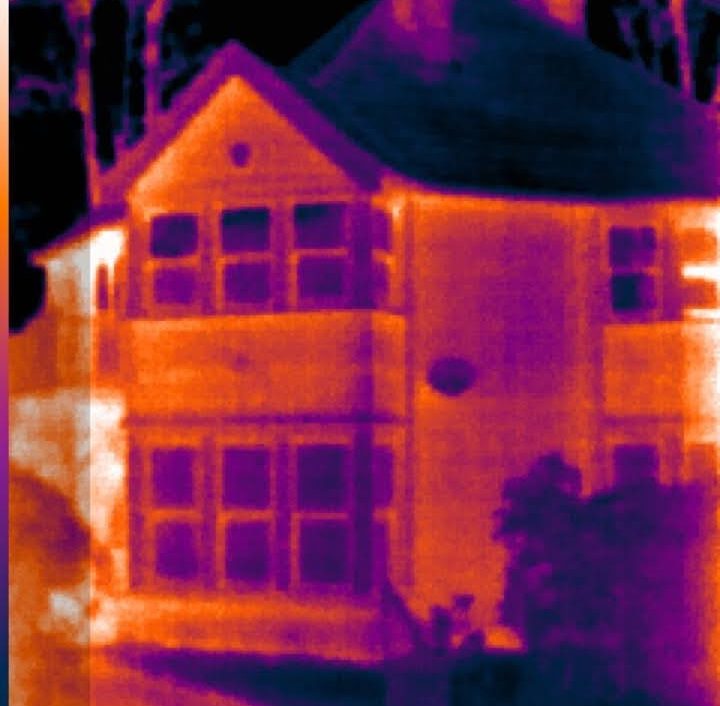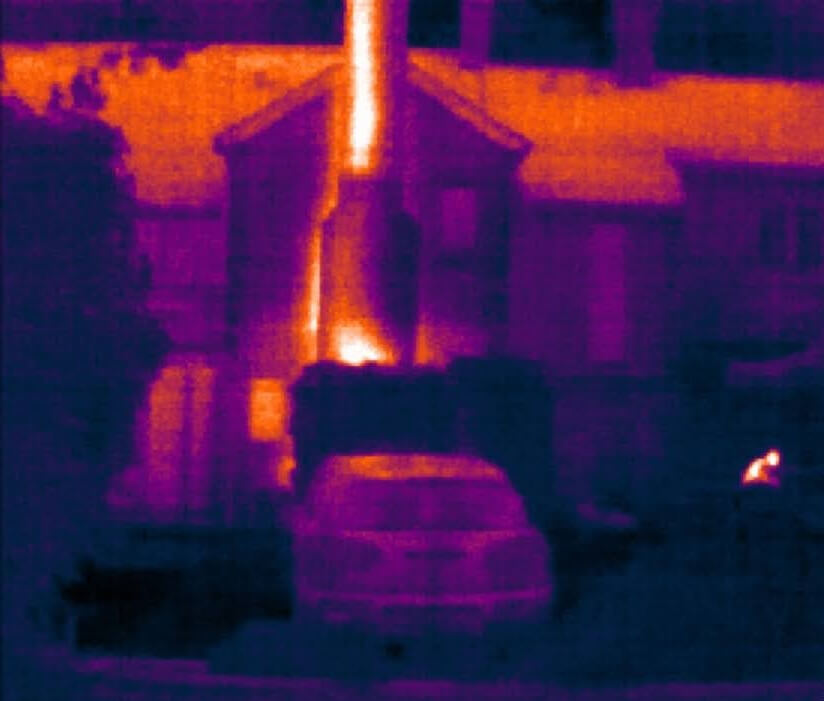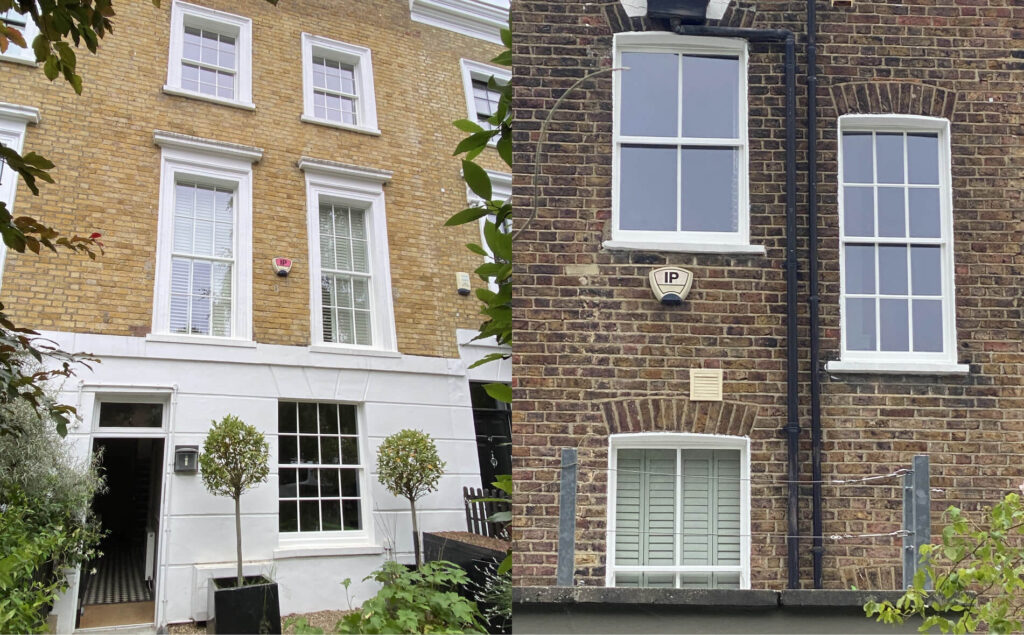
Secondary glazing Hertfordshire – Alternative solution
Our alternative secondary glazing service in Hertfordshire provides triple-glazing window insulation without the need for extra secondary framing.

Vacuum glazing substitutes all types of secondary glazing
Vacuum glazing represents a cutting-edge alternative to traditional sash windows secondary glazing.
We enhance existing sash windows by fitting vacuum glazing directly into the existing sashes.
The vacuum layer acts as an exceptional insulator, offering the thermal and sound insulation properties of triple glazing or better but with a fraction of the thickness and without altering the window’s original appearance.
This approach is particularly beneficial for heritage properties or buildings in conservation areas where preserving the aesthetic is crucial.
Vacuum glazing offers an ideal balance between maintaining the character of traditional windows and achieving modern standards of insulation and energy efficiency.
It’s a seamless upgrade that enhances the comfort and value of your property while respecting its architectural integrity.

Horizontal Sliding

Lift Out

Hinged / Fixed
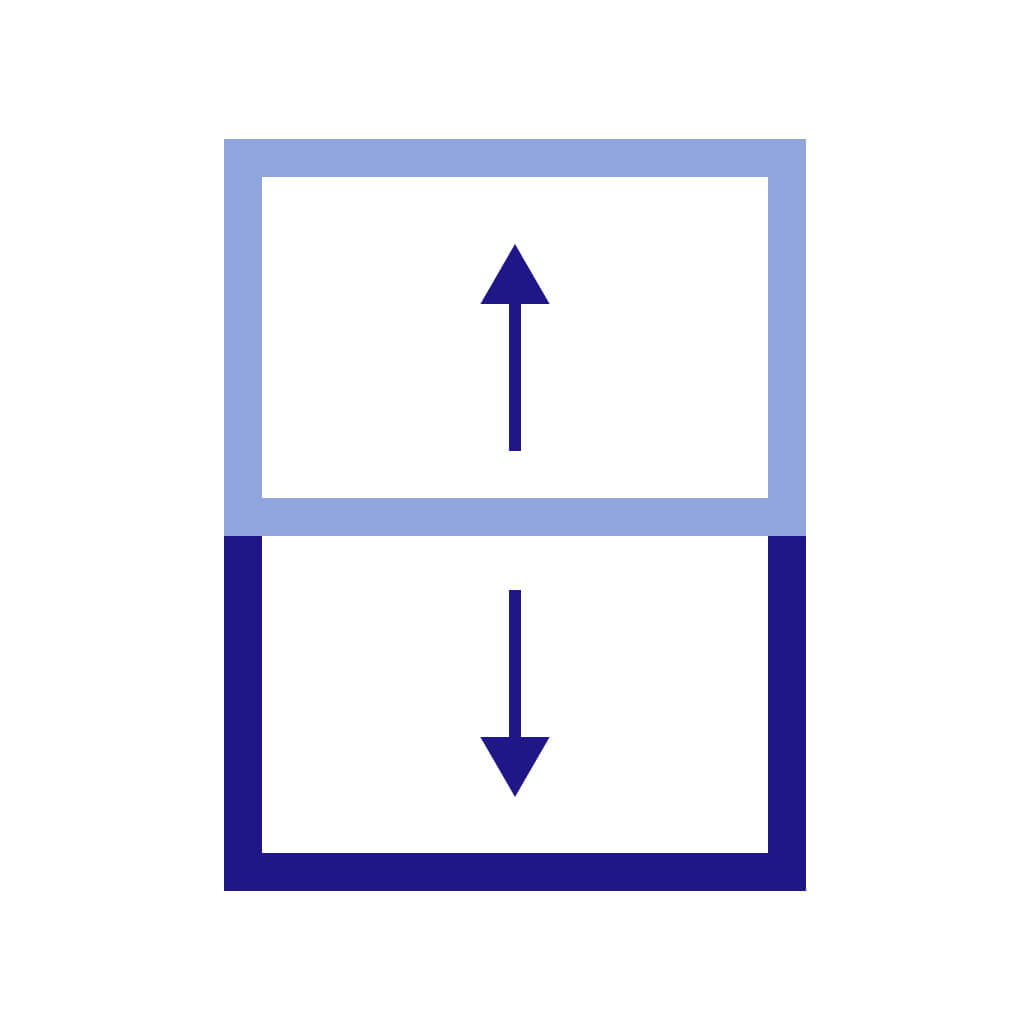
Vertical Sliders
Compare glazing solutions
Compare secondary glazing with our double glazing retrofitting service.
Unlike secondary glazing, the double glazing retrofitting method maintains the window’s original operation and does not add extra cleaning burdens.
Additionally, retrofitting tends to offer a more integrated and aesthetically pleasing solution, preserving the original look of the windows while providing all the benefits of modern vacuum-glazing technology.
We believe that double-glazing retrofitting is the ideal solution for residential properties, especially for homeowners seeking triple-glazing performance and aesthetics.
Compare the specifications of both glazing solutions below:
Appearance
Add second framing from the inereor side
Look sleek as orginal window.
Listed builsing approval
Does not need a permission
90% approval rate
Thermal insulation
1.7 W/m²K – 2.7W/(m²K)
0.48 – 0.7W/(m²K) same as triple glazing
Noise reduction
30dB – 45dB Depending on air gap between the existing primary window and the new secondary glazed unit.
35 dB – 39 dB
Cost (Materials and installetion)
£500 – £2200 By installing secondary glazing, you will need to allocate a separate budget for sash window maintenance, whereas reglazing encompasses the cost of sash window refurbishment.
£1500 per avarage window Price includes window frame restoration, draught-proofing, VIG glass cost of production and installation, painting.
Cost of refurbishing existing window frames
no included in secondary glazing price
Included in the price
Light transmission
75%-90%
78% – 79%
Security
Additional glazing adds additional security.
Toughened glass
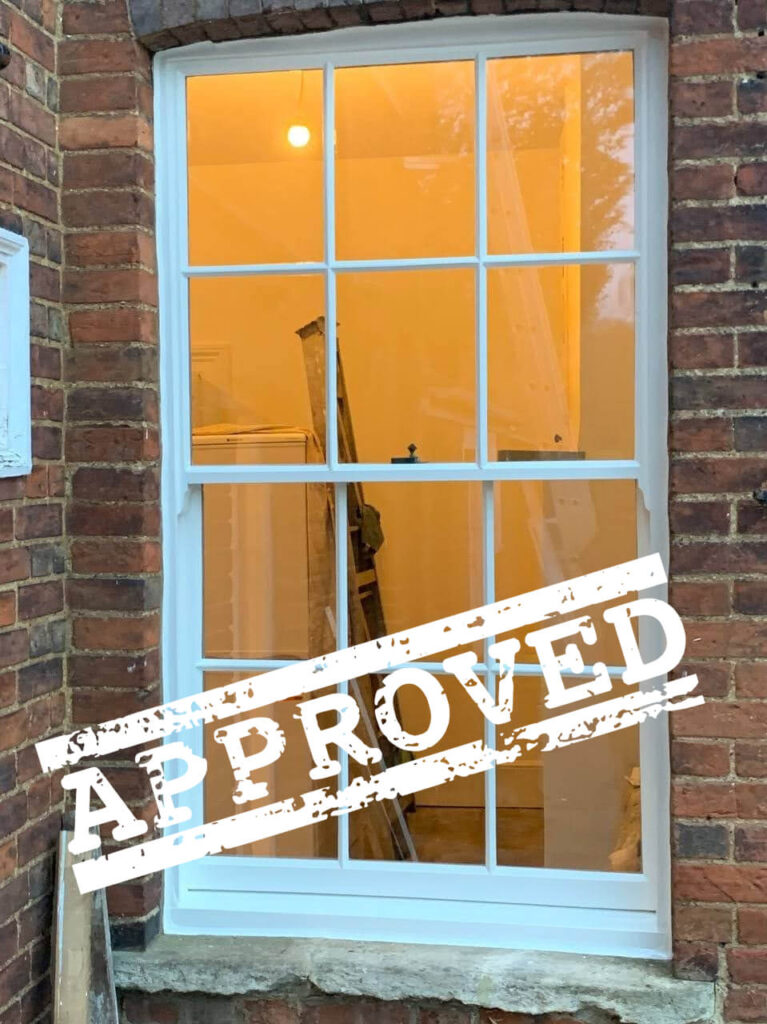
Effective glazing solutions for Grade 2 Listed and conserve area buildings
The success rate for obtaining permission to replace window glass in listed buildings is remarkably high, with approvals exceeding 90%.
This impressive approval percentage is attributed to our window replacement service’s adherence to the standards and regulations specific to listed buildings.
Key aspects of our service that comply with these standards include:
- Maintenance of the original wooden window frames, inclusive of classic Georgian bars.
- Utilization of VIG glazing, notable for its slim profile, allowing integration into current window sashes.
- Vacuum glazing is renowned for its durability, with a lifespan exceeding 25 years.
- Comprehensive restoration of wooden frames is part of the reglazing process.
Guarantees
An extensive guarantee covers all elements of our reglazing service, providing peace of mind.

Guarantee on paintwork

Guarantee on VIG glazing

Guarantee on repairs made with Accoya
How much does it cost?
Upgrading classic sash windows with toughened (5x stronger than regular glass) vacuum-insulated glass (VIG) for double glazing typically comes at an approximate cost of £1700 per window.
Breaking down the expenses, the VIG glass and reglazing services amount to £800.
Draught-proofing ranges between £300 and £360, while rejuvenating and painting the window frame and sashes costs around £600.
This comprehensive pricing encompasses the installation of VIG, draught-proofing, and complete refurbishment of both the frame and sashes.
This often aligns with or even falls below the pricing for high-quality secondary glazing solutions for heritage structures.

What’s included in our double glazing service in Hertfordshire
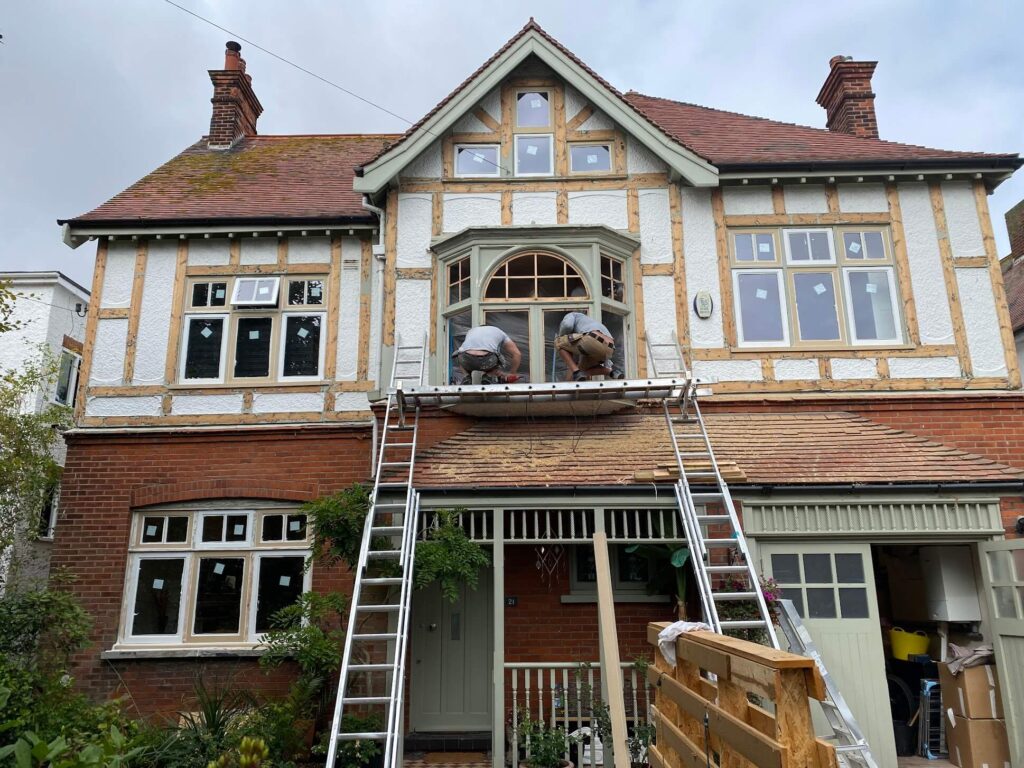
Double glazing retrofitting
Supply and installation of Vacuum Double-Glazing
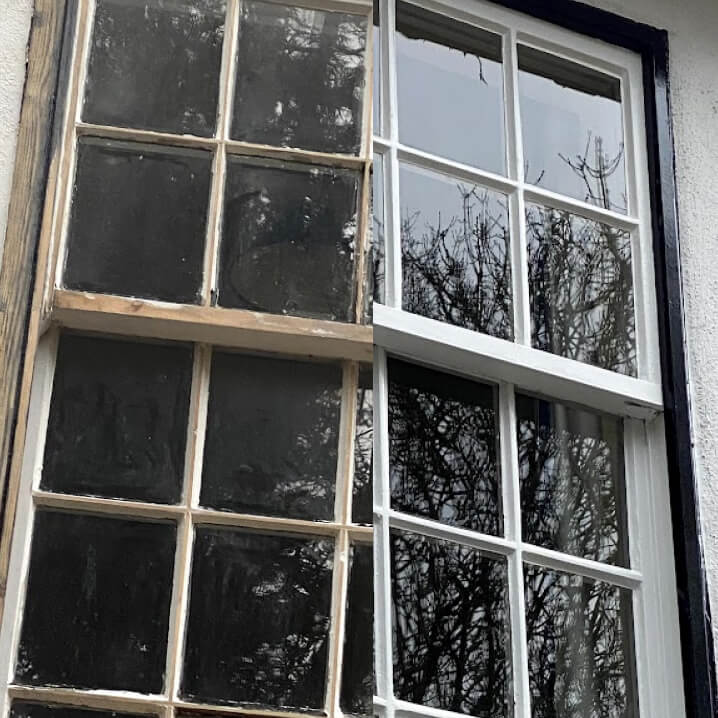
Window frame restoration
Restoration and rot repair for window frames and sashes
Customer testimonials
Installation process
- Book a free quote —>
We fully survey your windows and provide recommendations for reglazing and restoration. - We help you with building consent applications. Over 90% of our applications are approved. This is only applicable to Grade 2 listed properties. If your property is not listed, we will skip this step.
- When you receive approval, we will place the order for the production of a custom vacuum double-glazed unit.
- Our highly skilled craftspeople restore and reglaze your existing sash windows.
Past projects

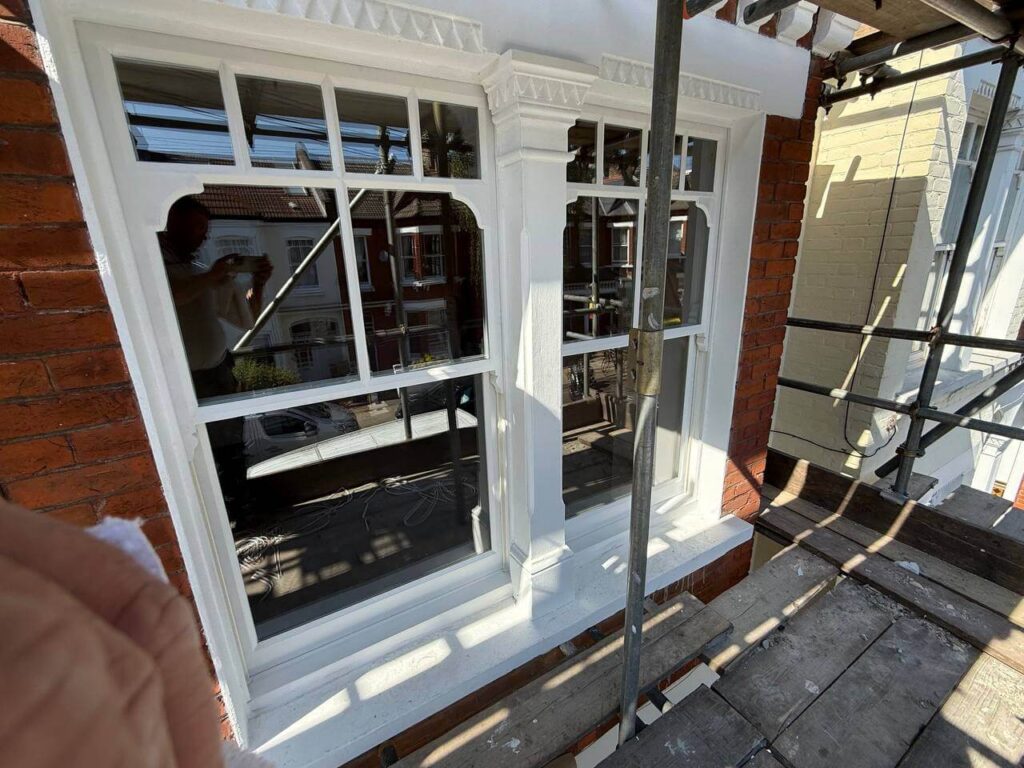
Edwardian sash windows reglazing
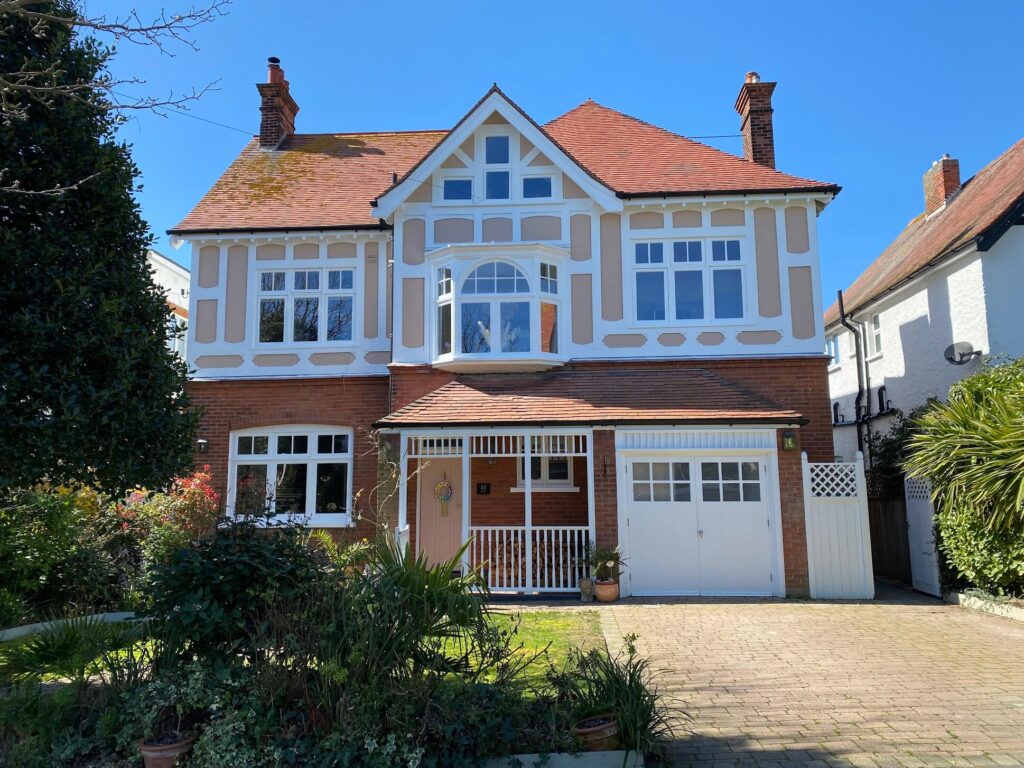
Wooden windows double glazing in Frinton-on-Sea

Sash windows restoration in West Essex

Double glazing Listed Grade 2 building
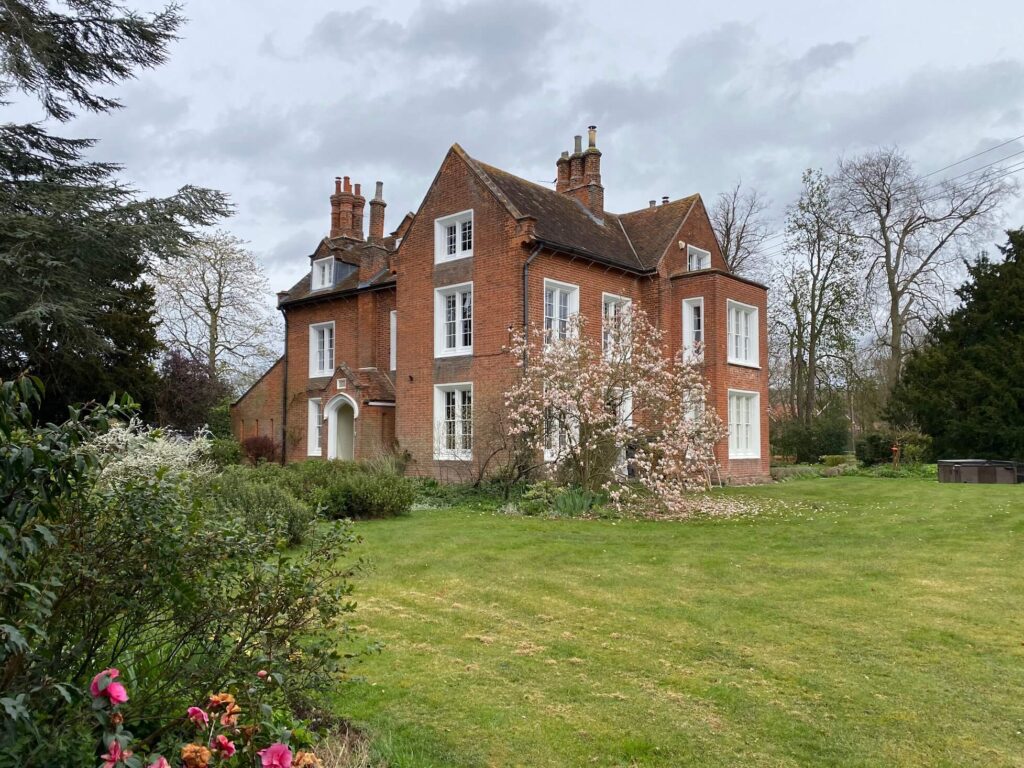
Retrofit double-glazing Essex
FAQs
What is secondary glazing?
Secondary glazing refers to an additional inner layer of glazing installed on the room side of existing windows.
It entails adding a second pane of glass or acrylic plastic to the window frame, creating an extra air gap between the original glass and the new secondary glazing.
Secondary glazing systems are typically mounted with clips, magnets or Velcro strips inside the window frame.
How effective is secondary glazing?
Secondary glazing remains effective in certain scenarios; however, its use is increasingly becoming obsolete due to the rise in mass-market production of vacuum-insulated units and the high approval rates of reglazing services for listed buildings.
What is the minimum gap for secondary glazing?
Typically, a distance of 100 to 200 millimetres (mm) is advised as the minimum separation for secondary glazing, crucial for enhancing both its thermal efficiency and noise reduction capabilities.
Yet, our specialized reglazing service eliminates the requirement for extra room behind your windows.
What is VIG glass?
Vacuum Insulated Glass (VIG) represents an advanced glazing technology, incorporating a vacuum space between dual glass layers. This design, by removing the air gap common in standard double-glazed units, substantially minimizes heat transmission via the glass.
Consequently, VIG excels in thermal insulation, offering equivalent or superior performance compared to traditional double or triple-glazed systems, yet with a more slender profile.
